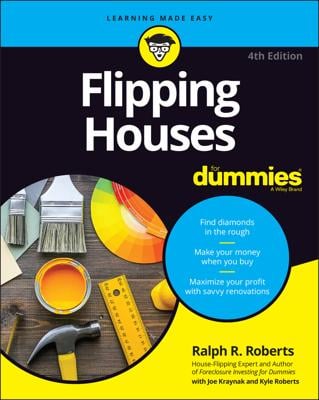You have several strategies to choose from when you flip a property. One strategy involves purchasing a property, leasing it to tenants for several years, and then selling it. One of the primary benefits of this strategy is that you use a portion of the rental payments you collect to make the payments on the loan you took out to purchase the property.
Assuming the home increases in value, you profit in two ways:
-
The tenants pay down the principal owed on the loan.
-
The property increases in value.
Prior to purchasing a rental property, you should crunch the numbers to see not only how much you stand to profit when you eventually sell the property but also how much money you can expect to earn monthly and annually from the property. Assuming the property gives you a positive cash flow, you can use your profits to help finance the purchase and renovation of another property.
Use the Rental Property Analysis Worksheet (Excel required) to evaluate how much you can expect to profit (or not) from a rental property under consideration. Enter details about the property into the highlighted fields, including the estimated market value after repairs, the profit percentage target, your costs for renovating and holding the property, and details about rental income and expenses.
The analysis worksheet (after you click the link, give it some time to open) crunches the numbers and spits out the important details, including:
-
Your total costs for acquiring, renovating, holding, and selling the property (Yes, you're planning to lease it out now, but eventually you'll sell it.)
-
The most you can pay for the property to reap a profit of at least 20 percent
-
Your monthly and annual cash flow from rental income based on 100 percent occupancy
-
Your total rental profit and profit per year based on the number of years you plan to lease the property, assuming 90 percent occupancy
-
Your total gross profit and gross profit per year from leasing and selling the property based on the number of years you plan to own the property
The Gross Profit Rental + Sales per Year percentage gives you a pretty good indication of the annual rate of return you can expect from your investment when all is said and done. Compare this rate with the rates of other investment options to gauge which investment is most attractive. For example, how does your annual percentage return compare to a specific investment in stocks or bonds?

